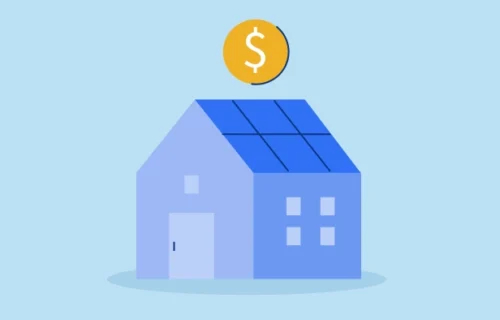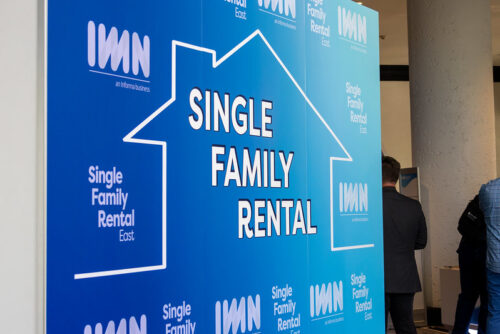
Connect with a Lima One expert today!
If you’d like to know more about this topic or see how it applies to your project, let’s talk.
Vacation and Short-Term Rental Glossary
STR Industry Terminology You Need to Know
Owning a short-term rental property is a strategy that more and more real estate investors are capitalizing on to generate a profit. But in order to make this investment strategy successful, it’s important to know the terms and factors to have a better understanding of how to start a short-term rental or vacation rental business.
Before investing in a short-term rental property, knowing the following key terms should be at the top of your list. If you have questions such as “What is RevPAR?” you’ve come to the right place.
Introduction to STR Vocabulary
When you are considering investing in a short-term rental vs. a long-term rental, you need to understand the different terms that indicate more unstable rental income. The big difference in short-term vs. long-term rental income is that long-term rental property income is generally stable because these types of investment properties have year-long leases in place. Short-term rental occupancy is more irregular, often based on seasonality, the market, popularity of the location, etc., so there are different ways of measuring both occupancy and income when it comes to STRs.
Short-Term Rental Income Metrics
- RevPAR — Revenue Per Available Room
Knowing how to calculate is straightforward using the RevPAR formula: Divide the gross revenue (usually monthly) by the number of nights the rental property is available. This shows the total revenue each STR property generates regardless of occupancy.
- ADR — Average Daily Rate
The difference between RevPAR and ADR is that ADR focuses on income only when the short-term rental is occupied.
Here’s an example: You as the property owner make $5000 in revenue from your short-term rental in the month of April, and the property was rented for 16 of 30 nights. The ADR calculation is $5000/16, or $312.50. On the other hand, the RevPAR calculation is $5000/30, or $166.67. As this example shows, ADR shows the effectiveness of rents, while RevPAR is a better metric when you start to evaluate cash flow and profitability of your investment property because it considers short-term rental occupancy rates, as well as rent amounts.
- RevPAN — Revenue Per Available Night
RevPAN is calculated similarly to RevPAR, but the RevPAN formula removes nights when the property is not available because of repairs, owner usage, or other factors.
Using the example above, if the STR or vacation rental property could not be rented for three nights because it was being painted, then the RevPAN would be calculated over 3 fewer nights: $5000/27, or $185.19.
- Gross Annual Income — The total income generated by a short-term rental on an annual basis
For rental properties, like vacation rentals that are highly seasonal, some real estate investors also choose to measure gross seasonal income. In a place like Miami Beach, Florida, where the weather is desirable year-round, an investor will likely want to measure annual income. However, in a place like Palm Springs, California, where visitors and demand are more prevalent during the winter season, it may be more helpful to measure gross seasonal income.
- Appreciation — The amount an investment property increases in value over a period of time.
When buying a short-term rental property, you as the investor should both want and expect the property to increase in value. While the other metrics and formulas listed above are unique to short-term rentals, appreciation applies to all residential investment properties. Appreciation in real estate is usually measured using regular and historical trends for the market and comps for the property type (not necessarily only short-term rental comps).
Short-Term Rental Occupancy Terms
Unlike long-term rentals which rely on long leases to provide cash flow, a short-term rental property will be occupied more sporadically. In 2022, the average occupancy rate of STRs was 58%, meaning that the property on average is rented 17 or 18 days out of a month. But before you question “are short-term rentals a good investment?”, remember that short-term rentals receive present a better ROI opportunity because property owners can charge a higher average daily rate, which means STRs and vacation rental properties can often be more profitable than long-term rentals.
- Occupancy — Usually measured as a percentage on a 30-day monthly scale.
Calculating the occupancy of a short-term rental property allows an investor to accurately estimate how many days the property will have renters. Knowing this, property owners can set daily and weekly rates at a level that ensures the property's overall RevPAR covers expenses and provides profit.
- ALOS — Average Length of Stay (sometimes abbreviated LOS)
Knowing a short-term rental property’s ALOS tells an investor how many bookings it takes to provide the total days of occupancy. You can determine ALOS by dividing the number of booked nights by the number of unique bookings.
Let’s return to our example of a short-term rental that is booked for 16 of 30 days. If that property was booked by 6 different guests (6 different bookings) to cover those 16 nights, the ALOS would be 16/6, or 2.66.
Short-Term Rental Expenses
For an investor considering venturing into the STR market, it’s good to keep in mind that in addition to normal rental property expenses such as a mortgage, property taxes, homeowner’s insurance, property management, maintenance/repairs, and utilities, short-term rentals have some additional and unique expenses including:
- Online service fees (Airbnb, VRBO, etc.)
- Supplies for renter use (toiletries and towels, kitchen supplies, wifi, etc.)
- Furnishings
- Cleaning costs Short-term rental property insurance
- Short-term rental occupancy tax, depending on the local jurisdiction
- (if the investor does not wish to manage the property)
Financing a Short-Term Rental Property
The big difference when you’re looking at short-term rental property loans vs. long-term rental property financing is the formula used to underwrite the property’s cash flow. Long-term rentals use DSCR (income divided by PITIA) to calculate this.
For short-term rentals, you also calculate the debt service coverage ratio, but differently. To calculate DSCR on short-term rental properties, divide the monthly rental income by PITIA (the principal, interest, taxes, insurance, and association dues paid to own the property). The difference between calculating DSCR for long-term and short-term rentals is that the numerator in the short-term rental equation is RevPAR, which looks at total income regardless of occupancy.
Are Short-Term Rentals a Good Investment?
Are short-term rentals a good investment for building your rental portfolio? You can answer that question once you understand the potential investment using the income, occupancy, expense, and financing terms and formulas we’ve covered here.
You’ll also want to consider locations to find what states allow short-term rentals, and what specific localities have short-term rental restrictions. The current rental market proves that short-term rentals can be found and profitable almost anywhere, from urban areas to small towns, remote areas to vacation hotspots.
If you’re considering purchasing a short-term rental investment property or want to take cash out from a current property through a refinance loan, Lima One Capital can help. Our private lending experts will work with you to find the best rental property loans for your next investment. Contact us today to discover how Lima One can finance your next short-term rental investment.
Subscribe for More Insights
Get the latest industry news & Lima One updates.









